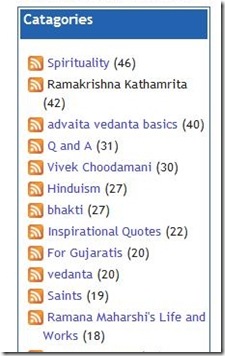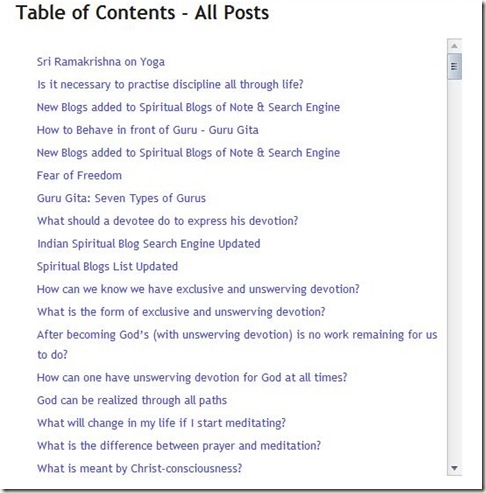Update 05-Dec-2017: As rightly pointed out by one Anonymous reader in comments section, the description of Vāchaka and Bodhaka guru were interchanged in table (not in verse-by-verse explanation). We are grateful to this reader. This article is old and some may have copied table as it conveniently summarizes all 7 guru-s. I hope they stumble upon this page again and correct the mistake.
My apologies for the mistake. I am once again am thankful to the Anonymous reader.
I have also updated the article. Corrected some typos, edited translation of some verses and most importantly used IAST scheme to denote saṃskrit words.
Guru Gītā is the divine conversation between Bhagavān Śiva (Shiva) and his divine consort Mā Pārvatī (Goddess Maa Parvati).
Updating this article has changed it's formatting. In correcting this article, if you find any mistake, please mention it in comments section.
Mā Pārvatī once saw Bhagavān Śiva Saluting Param Guru.
अचिन्त्याव्यक्तरूपाय निर्गुणाय गुणात्मने |
समस्त जगदाधारमूर्तये ब्रह्मणे नमः||
Prostrations to Brahman, the unthinkable, the unmanifest, beyond the three Gunas (Sattva, Rajas and Tamas) yet the Self of Guṇa-s, the Substratum behind the whole universe.(1)
She was surprised by this as Bhagavān Śiva is called Mahādeva i.e. God of the Gods (deva = God sometimes called demigods).
Guru Gītā starts with this astonishment and curiosity of Mā Pārvatī.
She humbly requests Bhagavān Śiva to explain her to whom, Bhagavān Śiva, who is worshipped by all Gods including Brahmā and Viṣṇu, Demi-Gods, Devils, Yaksha-s, Kinnara-s and others with devotion, is prostrating.
Bhagavān Śiva Replies Mā Pārvatī and sings the glory is Param Guru (Self Realised Guru) and Īśvara says that Guru is no different from (Brahman or Ātman or Self).
Bhagavān Śiva further sings the glory of a Param Guru by declaring that
शिवे रुष्टे गुरुस्त्राता गुरौ रुष्टे न कश्चन |
लब्ध्वा कुलगुरुं सम्यग्गुरुमेव समाश्रयेत् ||
If Śiva is angry, the Guru saves you; but if the Guru is angry, even Śiva cannot save you. Therefore, with every effort, take refuge in the Guru. (46)
शिवक्रोधाद् गुरुस्त्राता गुरुक्रोधाच्छिवो न हि |
तस्मात्सर्वप्रयत्नेन गुरोराज्ञां न लंघयेत् ||
The Guru is able to save one from the anger of Śiva. But not even Śiva can save if one incurs the Guru’s anger. Therefore, one should by all means and efforts take care that one does not disobey the Guru’s orders. (204)
गुरोः कृपाप्रसादेन ब्रह्मविष्णुशिवादयः |
सामर्थ्यमभजन् सर्वे सृष्टिस्थित्यंतकर्मणि ||
It is by the Guru’s grace and blessings that Brahmā, Viṣṇu and Śiva become capable of performing their respective duties of creation, preservation, and dissolution. (213)
Guru Gītā sings the Glories of Param Guru and Describes Guru as all powerful, ever filled with bliss, peace and compassion who can free disciple from saṃsāra chakra, the infinite cycle of life and death.
Guru Gītā describes the importance of a Guru in one’s Life.
There are Seven Types of Gurus as described in Guru Gītā in order of their importance.
सूचकादि प्रभेदेन गुरवो बहुधा स्मृताः |
स्वयं समयक् परीक्ष्याथ तत्वनिष्ठं भजेत्सुधीः ||
Gurus are of many types with different capacities. They are known by names, Sūchaka etc. The intelligent one should know and test for himself and seek refuge in the one who is established in Self-Knowledge. (165)
वर्णजालमिदं तद्वद्बाह्यशास्त्रं तु लौकिकम् |
यस्मिन् देवि समभ्यस्तं स गुरुः सूचकः स्मृतः ||
The 'Sūchaka Guru' (सूचक गुरु) is one who is well-versed (well-educated) and has mastery over atleast one external worldly science. (166) i.e. he has a Mastery over anyone science or art. e.g management Guru, knowledge of weapons, etc.
वर्णाश्रमोचितां विद्यां धर्माधर्मविधायिनीम् |
प्रवक्तारं गुरुं विद्धि वाचकस्त्वति पार्वति ||
O Pārvatī, the Guru who gives instructions about dharma and adharma suitable to one's varṇa and āśrama is known as 'Vāchaka Guru' (वाचक गुरु). (167)
पंचाक्षर्यादिमंत्राणामुपदेष्टा त पार्वति |
स गुरुर्बोधको भूयादुभयोरमुत्तमः ||
The Guru who initiates the disciple into the Panchāksharī etc Mantra, O Pārvatī, he is of the
'Bodhaka Guru' (बोधक गुरु) and he is superior to the Vachaka and Suchaka types named above. (168)
Note: 'Pancha' means 'five'. akshara means 'letter'. Panchāksharī mantra is five lettered vedic mantra (Na-ma-śi-vā-ya) etc. Śiva panchākshara stotra composed by Ādi Śankarāchārya jī is a set of 5 stanzas. First letter of each stanza begins with letter 'na', 'ma' ,'śi' ,vā', and 'ya' i.e. na-ma-śi-vā-ya when conjugated becomes Namaḥ Śivāya - a popular vedic mantra.
मोहमारणवश्यादितुच्छमंत्रोपदर्शिनम् |
निषिद्धगुरुरित्याहुः पण्डितस्तत्वदर्शिनः ||
The Guru who initiates one into the lower types of Vidyās, like Mohana, Māraṇa, Vaṣikaraṇa etc. is called by the name of 'Nishṣiddha Guru' (निषिद्ध गुरु) (i.e. prohibited Guru). (169)
अनित्यमिति निर्दिश्य संसारे संकटालयम् |
वैराग्यपथदर्शी यः स गुरुर्विहितः प्रिये ||
Making one understand “This Samsāra is transitory and an abode of calamities”, this Guru shows the path leading to Vairāgya (dispassion), know him as 'Vihita Guru' (विहित गुरु) (170)
तत्वमस्यादिवाक्यानामुपदेष्टा तु पार्वति |
कारणाख्यो गुरुः प्रोक्तो भवरोगनिवारकः ||
A Guru who initiates disciple into Mahāvākya Tattvamasi ( तत-त्वम-असि - तत्वमसि - Thou are that) etc. O Pārvatī, is called the 'Kāraṇākhya Guru' (कारणाअख्य गुरु). He is the remover of the disease of this mundane world. (171)
सर्वसन्देहसन्दोहनिर्मूलनविचक्षणः |
जन्ममृत्युभयघ्नो यः स गुरुः परमो मतः ||
He, who is capable of completely uprooting of all types of doubts, and the one who destroys birth, death and fear, is considered to be the 'Param Guru' (परम गुरु). (The Supreme Guru) (172)
Note: Destroying birth and death means freeing one of bondage and staying detached from the actions of mind, body and ego. This happens when one is rooted in Brahmajñāna. Birth and death are for different bodies and not immortal Ātman. One becomes free of fear when one is rooted in the knowledge of non-dual Brahman. There exists no duality, hence no fear of anything else and no fear of death and rebirth.
बहुजन्मकृतात् पुण्याल्लभ्यतेऽसौ महागुरुः |
लब्ध्वाऽमुं न पुनर्याति शिष्यः संसारबन्धनम् ||
One gets such a Mahā Guru (or Great Guru, Supreme Guru), as a result of merits acquired in many births. Having attained such a Guru, the disciple never falls prey to bonds to Samsāra, he is liberated forever. (173)
एवं बहुविधालोके गुरवः सन्ति पार्वति |
तेषु सर्वप्रत्नेन सेव्यो हि परमो गुरुः ||
O Pārvatī, in the world there are many kinds of Gurus, of all these, one should by all means and efforts, serve the Param Guru. (174)
Let us summarize these Seven Types of Gurus
Sūchaka Guru
सूचक गुरु | Mastery over any one science or art. e.g. mamagement Guru, Mastery in Healing, etc. |
Vāchaka Guru रु
वाचक गुरु | Gives instructions on dharma and adharma that is suitable to one's varṇa and Āśrama |
Bodhaka Guru रु
बोधक गुरु | Initiates one into spirituality by giving panchāksharī, etc Dikśā Mantra, which transforms the life of the Dikshā Receiving Person. |
Niṣiddha Guru
निषिद्ध गुरु | Prohibited Guru. Invokes God’s Secret powers for personal benefit or with evil intention. Teaches mohana (mesmerizing), mind control etc kind of forbidden knowledge which can be used for personal benefits and for destroying others. |
Vihita Guru रु
विहित गुरु | Imparts Vairāgya (Dispassion) in Society |
Kāraṇākhya Guru रु
कारणाख्य गुरु | Initiates one into Mahāvākya-s like tat-tvam-asi, etc.
Guru who gives Sanyāsa Dikshā (initiates disciple into Monkhood). He is the remover of the disease of this mundane world. |
Parama Guru
परम गुरु / सद्गुरु | Dispeller of doubts, removes the fear of birth and death is considered to be the “Param Guru”. (The Supreme Guru) i.e. one who teaches and shows the path of Liberation (moksha). (172) |
Param Guru is sometimes referred as sadguru सद्गुरु रु
Glories / Praises of Param Guru (often called as Sadguru)
जलानां सागरो राजा यथा भवति पार्वति |
गुरुणां तत्र सर्वेषां राजायं परमो गुरुः ||
Just as the ocean is the king of waters, the Param Guru is the King among Gurus. (179)
मोहादिरहितः शान्तो नित्यतृप्तो निराश्रयः |
तृणीकृतब्रह्मविष्णुवैभवः परमो गुरुः ||
A Param Guru is free from attachment, etc; peaceful, always contented in Himself, independent, and one who considers the status of Brahma and Vishnu like a blade of grass. (180)
सर्वकालविदेशेषु स्वतंत्रो निश्चलस्सुखी |
अखण्डैकरसास्वादतृप्तो हि परमो गुरुः ||
One who is independent at all times and places, who possess an unshakable mind and always blissful, who experiences the homogenous essence of the Self, such a one is the Param Guru. (181)
द्वैताद्वैतविनिर्मुक्तः स्वानुभूतिप्रकाशवान् |
अज्ञानान्धमश्छेत्ता सर्वज्ञ परमो गुरुः ||
One who is free from the feeling of duality and non-duality, who shines by the light of His self-realization, who is able to destroy the deep darkness of ignorance, and is omniscient, He is a Param Guru. (182)
यस्य दर्शनमात्रेण मनसः स्यात् प्रसन्नता |
स्वयं भूयात् धृतिश्शान्तिः स भवेत् परमो गुरुः ||
By whose mere Darshan (look with devotion), one attains calmness, cheerfulness, and peace and steadfastness, and peace of mind, such a one is Param Guru. (183)
स्वशरीरं शवं पश्यन् तथा स्वात्मानमद्वयम् |
यः स्त्रीकनकमोहघ्नः स भवेत् परमो गुरुः ||
One who looks upon his own body as a corpse, and his Self as the non-dual Brahman, and who has killed the infatuation for wealth and women, such a person is a Param Guru. (184)
Sadguru, the only Saviour
कुलं धनं बलं शास्त्रं बान्धवास्सोदरा इमे |
मरणे नोपयुज्यन्ते गुरुरेको हि तारकः ||
Family traditions, wealth, strength, shastras, relatives, brothers, - none of these are useful to you at the time of death. Satguru is the only saviour. (188)
Always be the servant of Sadguru
अद्वैतं भावयेन्नित्यं सर्वावस्थासु सर्वदा |
कदाचिदपि नो कुर्यादद्वैतं गुरुसन्निधौ ||
At all times and under all conditions one should feel the non duality of the Self but one should never have this feeling with his Guru. (62)
Prayer and Salutation to Param Guru
अचिन्त्याव्यक्तरूपाय निर्गुणाय गुणात्मने |
समस्त जगदाधारमूर्तये ब्रह्मणे नमः||
Prostrations to Brahman, the unthinkable, the unmanifest, beyond the three Gunas(Sattva,Rajas & Tamas qualities of Nature) yet the Self of Gunas, the Substratum behind the whole universe.(1)
यस्य प्रसादादहमेव सर्वं मय्येव सर्वं परिकल्पितं च |
इत्थं विजानामि सदात्मरूपं त्स्यांघ्रिपद्मं प्रणतोऽस्मि नित्यम् ||
By whose grace that one realizes “I am everything, everything is superimposed in me, I offer my salutations and worship to my self-realised Satguru’s lotus feet. (215)
अज्ञानतिमिरान्धस्य विषयाक्रान्तचेतसः |
ज्ञानप्रभाप्रदानेन प्रसादं कुरु मे प्रभो ||
O Lord, by the gift of the light of knowledge, may Thy blessings be bestowed on me, whose eyes are covered by the cataracts of ignorance, and whose mind is captured by sense pleasure. (216)
HAPPY GURU POORNIMA
Offline Source: Discourse on Guru Gita by Swami Ishwarananda of Chinmaya Mission
Online Source:
http://hariomgroup.net/hariombooks/satsang/English/SriGuruGita.htm







